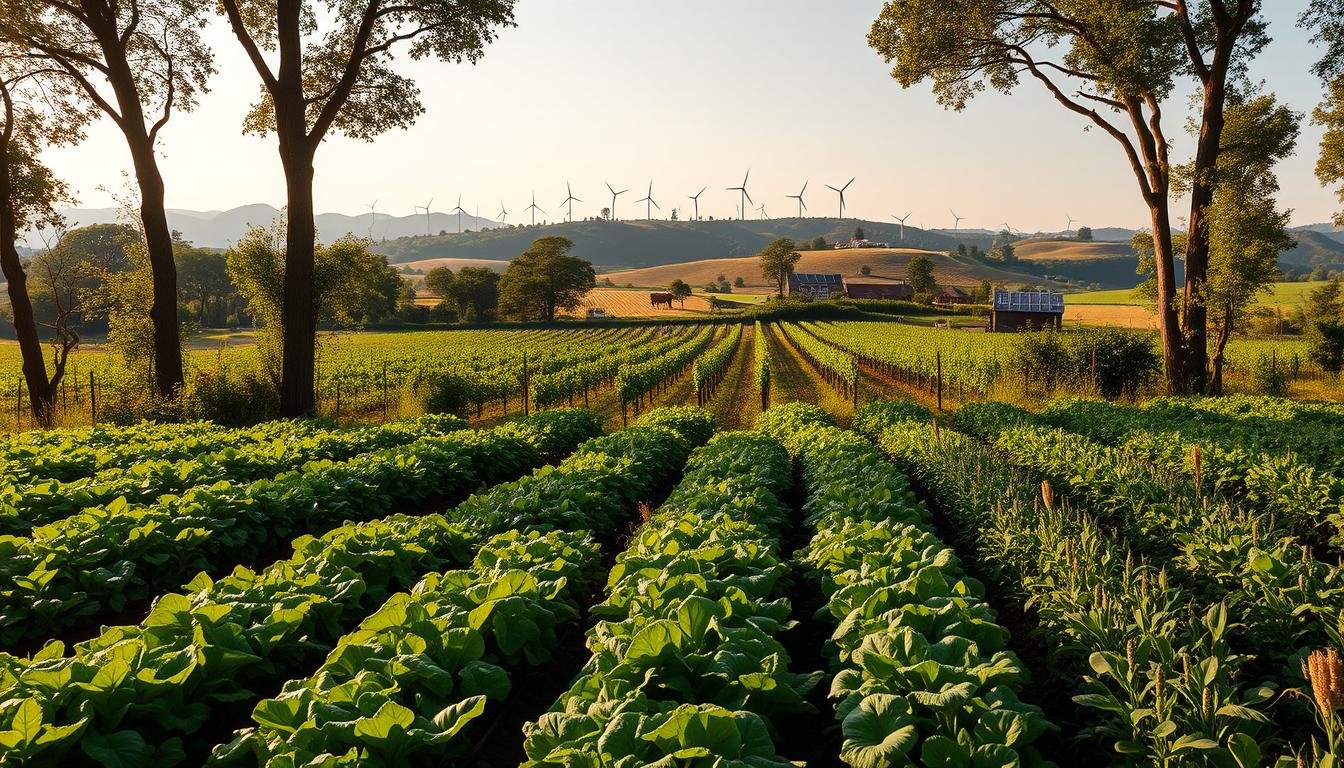Half Moon Agriculture: A Sustainable Approach to Farming

Introduction to Half Moon Agriculture
Agriculture has long been the backbone of human civilization, providing food, resources, and livelihoods. However, with increasing environmental challenges such as soil erosion, desertification, and water scarcity, traditional farming methods often fail to sustain long-term agricultural productivity. This has led to the emergence of Half Moon Agriculture, a technique designed to maximize water retention and soil fertility in arid and semi-arid regions.
Half Moon Agriculture utilizes semi-circular, crescent-shaped earth bunds to trap rainwater, reduce runoff, and enhance crop growth. This method is particularly effective in drylands where rainfall is scarce and irregular. By improving soil moisture levels, this technique allows farmers to cultivate land that would otherwise be unsuitable for agriculture.
In this article, we will explore the history, principles, benefits, challenges, and future prospects of Half Moon Agriculture and why it is an essential tool for sustainable farming.
Historical Background and Development
The origins of Half Moon Agriculture can be traced back to ancient farming techniques used in arid regions of Africa, the Middle East, and parts of Asia. For centuries, communities in these areas developed innovative ways to capture and store water to sustain their crops and livestock.
One of the earliest and most successful implementations of half-moon structures is found in the Sahel region of Africa, where farmers have been using them to rehabilitate degraded land. Organizations such as the World Food Programme (WFP) and the UN’s Food and Agriculture Organization (FAO) have supported these initiatives, recognizing their potential to combat desertification and improve food security.
Today, modern agricultural research continues to refine and promote Half Moon Agriculture as part of climate-smart farming strategies, particularly in countries facing severe droughts and land degradation.
Core Principles of Half Moon Agriculture
Half Moon Agriculture follows several key principles that make it an effective and sustainable farming technique:
1. Water Conservation
The primary goal of Half Moon Agriculture is to harvest rainwater and prevent runoff. The crescent-shaped bunds act as natural reservoirs, directing water toward plant roots and increasing soil moisture retention.
2. Soil Fertility Improvement
By preventing water loss, Half Moon Agriculture enhances soil nutrient absorption and reduces erosion. Organic matter from crop residues and compost is often added to improve soil quality.
3. Adaptability to Drylands
This method is particularly suited for semi-arid and arid regions where rainfall is unpredictable. It allows communities to cultivate land that would otherwise be considered unsuitable for farming.
4. Low-Cost and Low-Tech Approach
Unlike industrial irrigation systems, Half Moon Agriculture requires minimal investment and maintenance, making it accessible to smallholder farmers with limited resources.
Techniques and Practices in Half Moon Agriculture
1. Creating Half Moon Structures
Farmers dig semi-circular pits with a diameter of 2–3 meters and a depth of 15–20 cm.
The open side of the crescent faces uphill to catch rainwater and slow down runoff.
Soil from the pits is piled on the curved edges to form small embankments that further trap moisture.
2. Selecting Suitable Crops
Crops best suited for Half Moon Agriculture include:
Drought-resistant cereals (millet, sorghum, maize)
Legumes (beans, cowpeas, groundnuts)
Tree crops (acacia, moringa, fruit trees)
3. Adding Organic Matter
To improve soil fertility, farmers often mix organic matter such as compost, manure, and biochar into the half-moon pits. This enriches the soil and enhances plant growth.
4. Combining with Agroforestry
Integrating trees and shrubs into Half Moon Agriculture helps to stabilize the soil, reduce evaporation, and provide shade for crops, creating a more resilient farming system.
Benefits of Half Moon Agriculture
Half Moon Agriculture offers numerous advantages that contribute to sustainable and climate-resilient farming.
1. Increases Water Retention
By capturing and storing rainwater, this method reduces drought stress and ensures crops receive adequate moisture, even during dry spells.
2. Prevents Soil Erosion
The half-moon structures slow down water runoff, allowing soil to absorb water instead of being washed away. This preserves topsoil and nutrients essential for plant growth.
3. Restores Degraded Land
Many degraded lands can be rehabilitated using Half Moon Agriculture. It is an effective method for restoring soil fertility in desertified areas and making unproductive land farmable again.
4. Improves Crop Yields
Farmers using this method report higher agricultural productivity, as crops receive better water supply and nutrients. This leads to increased food security in vulnerable communities.
5. Cost-Effective and Easy to Implement
Unlike expensive irrigation systems, Half Moon Agriculture requires no advanced technology or large-scale infrastructure. It is a low-cost solution accessible to smallholder farmers.
Challenges and Limitations
Despite its advantages, Half Moon Agriculture also has some limitations that need to be addressed:
1. Labor-Intensive Process
Creating half-moon structures manually requires significant labor and time, which may not be feasible for farmers without community support.
2. Limited to Certain Climates
While effective in drylands, Half Moon Agriculture may not be suitable for regions with heavy rainfall, as excessive water accumulation can lead to plant damage.
3. Requires Proper Maintenance
Over time, half-moon bunds may degrade due to erosion or animal activity. Regular maintenance is necessary to keep them functional.
4. Awareness and Training
Many farmers lack knowledge or training on how to properly implement Half Moon Agriculture. More efforts are needed to provide education and technical support.
Case Studies of Successful Implementation
1. Niger: Re-Greening the Sahel
Farmers in Niger’s Zinder region have successfully restored thousands of hectares of degraded land using Half Moon Agriculture. This project, supported by the World Food Programme and FAO, has improved soil fertility and increased food production.
2. Burkina Faso: Community-Led Farming
In Burkina Faso, farmers have adopted half-moon structures to combat desertification and increase millet and sorghum yields. The initiative has led to greater food security and economic stability for rural communities.
Future Prospects for Half Moon Agriculture
As climate change continues to threaten global food security, Half Moon Agriculture is gaining recognition as a sustainable farming solution. Future developments could include:
Scaling up adoption through government policies and funding.
Integrating modern irrigation techniques to enhance efficiency.
Developing community-led training programs to educate more farmers.
Organizations worldwide are now investing in nature-based solutions like Half Moon Agriculture to combat soil degradation, improve food production, and restore ecosystems.
Conclusion
Half Moon Agriculture is a powerful, low-cost, and sustainable farming method that has the potential to transform agriculture in dryland regions. By conserving water, improving soil health, and increasing crop yields, this technique offers a promising solution to food security and land restoration challenges.
As the world faces growing environmental and agricultural challenges, embracing innovative, climate-smart practices like Half Moon Agriculture will be essential for a sustainable future.
Case Study Resources:
Burkina Faso: Combined Climate-Smart Agriculture and Ecosystem-Based Approaches
Kenya: Transforming Isiolo's Semi-Arid Lands
Burkina Faso: Nutrient Amendments in Half-Moon Basins

Share this content:

Post Comment